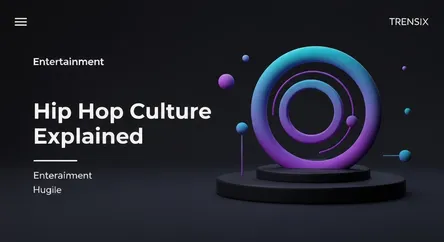Entertainment
Hip Hop Culture Explained

Explore Hip Hop, a vibrant cultural movement born in the Bronx. Discover its core elements: rapping, DJing, breakdancing, and graffiti art.
What is it?
Hip Hop is a dynamic cultural movement that originated in the Bronx, New York City, during the 1970s among African American and Latino youth. It is more than just a music genre; it's a complete culture composed of four principal elements: MCing (rapping), DJing (turntablism), B-boying (breakdancing), and graffiti art. These pillars represent the creative and expressive outlets that formed the foundation of the culture, providing a voice for communities facing social and economic challenges. Over the decades, it has grown from block parties into a global phenomenon, encompassing music, fashion, art, and language.
Why is it trending?
Hip Hop consistently remains a dominant force in global pop culture. Its music tops charts worldwide, and its influence is omnipresent on social media platforms like TikTok, where its sounds and dances fuel viral trends. The culture is constantly evolving, with new artists and subgenres pushing creative boundaries. Major milestones, such as the recent 50th anniversary celebrations, have sparked renewed mainstream interest, documentaries, and concerts, highlighting its enduring legacy and ongoing relevance in the contemporary entertainment landscape.
How does it affect people?
Hip Hop profoundly impacts society by serving as a powerful platform for storytelling and social commentary, often addressing issues of inequality, justice, and identity. It has given a voice to marginalized communities globally, fostering a sense of empowerment and solidarity. Its influence extends to fashion, popularizing streetwear and sneaker culture, and has significantly shaped modern slang and communication. For millions, Hip Hop is a source of inspiration, identity, and community, connecting people across diverse backgrounds through shared beats, rhythms, and narratives.